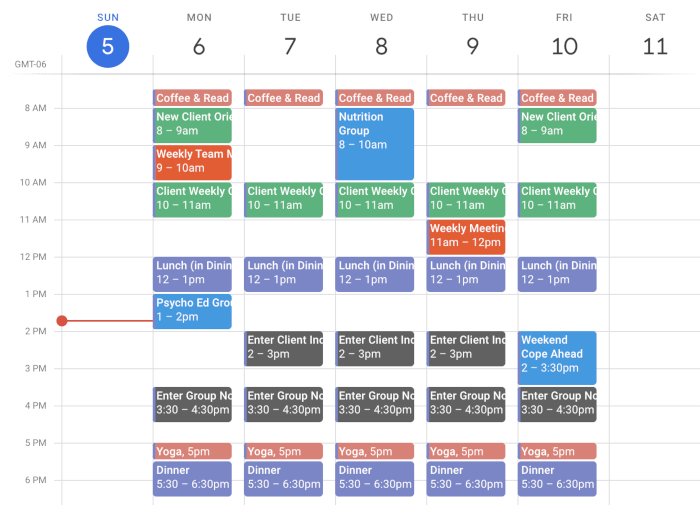The fundamental reality is that effective time management transcends simply stuffing additional tasks into your daily routine. It centers on making deliberate, conscious decisions about how you allocate your most irreplaceable asset. When you master the art of managing time effectively, you don’t merely increase your output—you cultivate breathing room for your highest priorities, diminish chronic stress, and reclaim authority over your daily existence.
This in-depth guide will introduce you to eight scientifically-backed methodologies that high-performing individuals leverage to optimize their productivity while maintaining equilibrium. These aren’t abstract theories—they’re actionable frameworks you can deploy today to revolutionize your approach to daily time allocation.
The Psychology Behind Time Management Challenges
Before exploring effective solutions, it’s crucial to examine why time management presents such formidable obstacles for most individuals. The underlying factors typically extend far beyond inadequate planning or insufficient motivation.
The primary obstacle is the false assumption that all activities carry equal weight. Without a systematic approach to prioritization, individuals frequently exhaust their energy on seemingly urgent but ultimately low-impact tasks while genuinely important long-term objectives get continuously postponed. This pattern establishes a destructive cycle of reactive responses rather than strategic, proactive planning.
Digital interruptions exponentially amplify these challenges. Statistical research reveals that the typical person examines their smartphone 96 times daily and processes more than 120 emails within a 24-hour period. Each notification fractures your concentration away from meaningful work, and cognitive studies demonstrate that achieving complete refocus after an interruption requires approximately 23 minutes on average.
Perfectionist tendencies also contribute significantly to time management dysfunction. Numerous individuals invest disproportionate time refining tasks that would be entirely satisfactory with considerably less effort. This perfectionist mindset triggers procrastination, deadline failures, and an inability to delegate responsibilities effectively.
Additionally, most people dramatically underestimate the actual duration required for task completion. This cognitive bias, known as the planning fallacy, generates unrealistic schedules, perpetual rushing, and the exasperating feeling of constant inadequacy. When you habitually overcommit your resources, even minor unexpected circumstances can completely disrupt your entire day.
The Eisenhower Decision Matrix: Strategic Task Prioritization
Developed by President Dwight D. Eisenhower’s strategic thinking principles, this decision-making framework represents one of the most potent instruments for effective time management. The matrix systematically categorizes all activities into four distinct quadrants based on their urgency and importance levels.

Quadrant 1: Urgent and Important (Immediate Action Required)
These represent authentic crises demanding instant attention. Examples encompass medical emergencies, critical project deadlines, or system failures. While these situations require immediate response, excessive time spent in this quadrant signals inadequate preventive planning.
Quadrant 2: Important but Not Urgent (Strategic Scheduling)
This quadrant represents where peak performers invest the majority of their time. These activities encompass strategic planning, skill acquisition, relationship cultivation, and preventive maintenance. Weekly planning sessions, consistent exercise routines, and continuous learning initiatives all belong in this category.
Quadrant 3: Urgent but Not Important (Delegation Opportunities)
These activities create the illusion of importance through their urgency, yet they fail to advance your long-term objectives. Examples include most interruptions, routine phone calls, and certain meetings. The strategy involves learning to delegate these responsibilities or discovering methods to minimize their impact.
Quadrant 4: Neither Urgent nor Important (Elimination Targets)
These represent time-wasting activities that provide minimal value. Excessive social media consumption, aimless internet browsing, and certain entertainment activities belong here. The objective is to minimize or completely eliminate these activities.
To implement this framework successfully, begin each week by categorizing your pending tasks. Dedicate 60-70% of your time to Quadrant 2 activities, as these generate the most substantial long-term value and prevent future crises.
Time Blocking: Architectural Approach to Daily Productivity
Time blocking revolutionizes your calendar from a basic appointment tracker into a comprehensive productivity management system. Rather than maintaining an endless to-do list, you assign specific time intervals to different activities, treating each task as a non-negotiable appointment with yourself.
• Prioritize Your Non-Negotiables
Initiate by blocking time for your most critical work during peak energy periods. For most individuals, this involves scheduling deep work sessions during morning hours. Defend these blocks rigorously—they represent your most valuable productive time.
• Implement Activity Batching
Cluster related tasks to minimize context switching. For instance, designate specific periods for email processing, phone calls, or administrative duties. This methodology reduces mental fatigue and enhances efficiency.
• Incorporate Buffer Periods
Build 15-30 minute transition periods between major activities. This prevents your schedule from becoming fragile, where one delayed meeting disrupts your entire day. Buffer time also accommodates natural transitions and unexpected opportunities.
• Account for Unexpected Events
Reserve 25% of your schedule for unplanned activities. While this might seem counterproductive, it actually enhances productivity by preventing constant rescheduling when priorities shift unexpectedly.
The cornerstone of successful time blocking is treating your scheduled activities with the same respect you would accord a client meeting. When your calendar indicates it’s time to work on a project, honor that commitment to yourself.
The Two-Minute Productivity Rule: Preventing Task Accumulation
Championed by productivity consultant David Allen, the two-minute rule is brilliantly straightforward: if a task requires less than two minutes to complete, execute it immediately rather than adding it to your task list.
This methodology succeeds because the administrative overhead of tracking minor tasks frequently exceeds the effort required to complete them. Writing down “respond to Sarah’s email,” remembering it, and scheduling future time for completion consumes more mental energy than simply responding immediately.
The rule prevents minor tasks from accumulating into overwhelming backlogs. Those quick administrative duties, brief phone calls, and simple responses can snowball into major time drains when left unaddressed. By handling them immediately, you maintain workflow momentum and prevent mental clutter.
However, timing is crucial. Don’t allow the two-minute rule to interrupt deep work sessions or important meetings. Instead, apply it during natural transition periods or when you’re already in administrative mode.
Examples of optimal two-minute tasks include:
• Responding to straightforward emails
• Filing documents
• Making brief phone calls
• Updating calendar entries
• Sending concise text messages
• Returning items to their designated locations
Be vigilant about scope expansion. Some tasks initially appear to be two-minute activities but actually require significantly more time. If you begin a “quick” task and realize it’s more complex, stop and schedule appropriate time for it later.
Digital Productivity Tools for Enhanced Time Management
While technology can become a significant distraction, strategically selected digital tools can substantially enhance your ability to manage time effectively. The key lies in choosing tools that streamline rather than complicate your workflow.
• Task Management Applications
Applications such as Todoist, Things, or Asana enable you to capture, organize, and prioritize tasks across multiple projects. Seek features like natural language processing, project templates, and collaboration capabilities if you work with teams.
• Advanced Calendar Applications
Beyond basic scheduling, modern calendar applications offer time blocking features, automatic travel time calculations, and integration with other productivity tools. Google Calendar and Outlook both provide robust scheduling capabilities with intelligent suggestions.
• Time Tracking Software
Tools like RescueTime, Toggl, or Clockify help you understand your actual time allocation patterns. Many individuals are surprised to discover how much time they spend on low-value activities. This awareness becomes the foundation for better time allocation.
• Focus Enhancement Apps
Applications like Freedom, Cold Turkey, or Forest block distracting websites and applications during focused work sessions. Some individuals find these tools essential for maintaining concentration in our hyperconnected environment.
• Automation Tools
Zapier, IFTTT, and similar services can automate routine tasks between different applications. For example, you can automatically save email attachments to cloud storage or create calendar events from form submissions.
The key to success with digital tools is selective restraint. Choose one or two tools that integrate seamlessly with your existing workflow rather than attempting to optimize every aspect of your productivity system.
Boundary Setting: The Art of Strategic Declining
One of the most challenging aspects of time management involves learning to decline requests that don’t align with your priorities. Every affirmative response to one opportunity represents a negative response to something else, yet many people struggle with establishing appropriate boundaries.
The problem frequently stems from the desire to be helpful or fear of social consequences. However, accepting every request ultimately reduces your effectiveness and can damage relationships when you’re overcommitted and unable to deliver quality work.
• Establish Decision-Making Criteria
Develop clear guidelines for determining which types of requests you’ll accept. Consider factors like alignment with your objectives, available capacity, and the opportunity cost of agreement. Having predetermined criteria makes decisions easier and more consistent.
• Master Graceful Declining
You don’t need elaborate justifications to decline requests. Simple phrases like “I don’t have the bandwidth for that currently” or “That doesn’t align with my current priorities” are perfectly acceptable. Offer alternatives when possible, such as suggesting someone else who might be better suited for the task.
• Safeguard Your Peak Performance Hours
Identify your most productive time periods and protect them vigilantly. If you perform your best work in the morning, don’t schedule non-essential meetings during those hours. Communicate these boundaries clearly to colleagues and clients.
• Implement Waiting Periods for Non-Urgent Requests
For requests that aren’t time-sensitive, implement a 24-48 hour waiting period before responding. This prevents impulsive acceptance and provides time to consider the implications properly.
Remember that setting boundaries actually serves others. When you’re selective about your commitments, you can deliver higher quality work and be more present for the activities you do choose to pursue.
Remote Work Time Management: Navigating the Home Office Challenge
Remote work introduces distinct time management challenges that traditional office environments don’t present. Without clear physical boundaries between professional and personal life, many individuals struggle with both productivity and work-life balance.
• Establish a Dedicated Workspace
Even without a separate office, designate a specific area for work. This physical boundary helps your brain transition between professional and personal modes. When you’re in your workspace, you’re professionally engaged. When you leave it, you’re off duty.
• Create Clear Start and End Times
Without a commute to create natural boundaries, it’s easy for work to expand into all available time. Set specific work hours and maintain them consistently. Use rituals like changing clothes or taking a brief walk to signal the beginning and end of your workday.
• Minimize Household Distractions
The convenience of being home can become a productivity obstacle. Resist the temptation to handle household chores during work hours, and communicate your schedule clearly to family members or roommates.
• Enhance Communication with Colleagues
In remote settings, communication can easily become inefficient. Be proactive about sharing your schedule, project progress, and availability. This prevents unnecessary interruptions and helps maintain professional relationships.
• Leverage Technology for Focus
Utilize tools like website blockers, separate user accounts for work and personal activities, and dedicated communication channels. Some individuals find that using a separate device or browser profile for work helps maintain focus.
• Schedule Regular Breaks
When your home becomes your office, it’s tempting to work through breaks or eat lunch at your desk. However, regular breaks are essential for maintaining productivity and preventing burnout.
Energy Management: Synchronizing Tasks with Natural Rhythms
Traditional time management emphasizes scheduling, but energy management recognizes that your capacity fluctuates throughout the day. By aligning your most important work with your peak energy periods, you can accomplish more in less time.
• Identify Your Personal Chronotype
Some individuals are naturally energetic in the morning, while others peak later in the day. Track your energy levels for a week to identify patterns. Note when you feel most alert, creative, and focused, as well as when you experience natural energy dips.
• Match Tasks to Energy Levels
Schedule your most challenging, creative, or important work during your peak energy periods. Use lower-energy times for routine tasks like email, administrative work, or planning. This approach maximizes your effectiveness during high-capacity periods.
• Understand Different Energy Types
Not all tasks require the same type of energy. Creative work might need inspiration and focus, while administrative tasks require attention to detail. Some activities actually provide energy, like connecting with colleagues or working on passion projects.
• Manage Energy Drains
Identify activities that consistently drain your energy and find ways to minimize their impact. This might involve delegating certain tasks, changing your approach, or scheduling them strategically around higher-energy activities.
• Implement Energy Restoration Practices
Build activities into your schedule that restore energy rather than depleting it. This might include brief walks, meditation, listening to music, or spending time in nature. These aren’t luxury activities—they’re essential maintenance for sustained productivity.
• Consider Weekly and Seasonal Rhythms
Energy patterns extend beyond daily cycles. Many people find Mondays challenging and Fridays less productive. Some experience seasonal variations in energy and motivation. Factor these larger patterns into your planning.
Conclusion: Your Journey to Effective Time Management
Mastering the ability to manage time effectively is a competency that yields returns in every dimension of your life. The eight methodologies outlined in this guide provide a comprehensive framework for taking control of your schedule and focusing on what truly matters.
Remember that implementing these strategies is an ongoing process, not a final destination. Begin with one or two techniques that resonate most with your current situation. As these become habitual, gradually incorporate additional strategies. The goal isn’t perfection—it’s progress toward a more intentional, productive, and balanced existence.
The most successful individuals aren’t those who work the longest hours, but those who work most strategically. By prioritizing effectively, protecting your energy, and maintaining clear boundaries, you can achieve more while experiencing less stress and overwhelm.
Your time represents your most valuable resource. Invest it wisely, and observe as your productivity, satisfaction, and overall quality of life improve dramatically.



